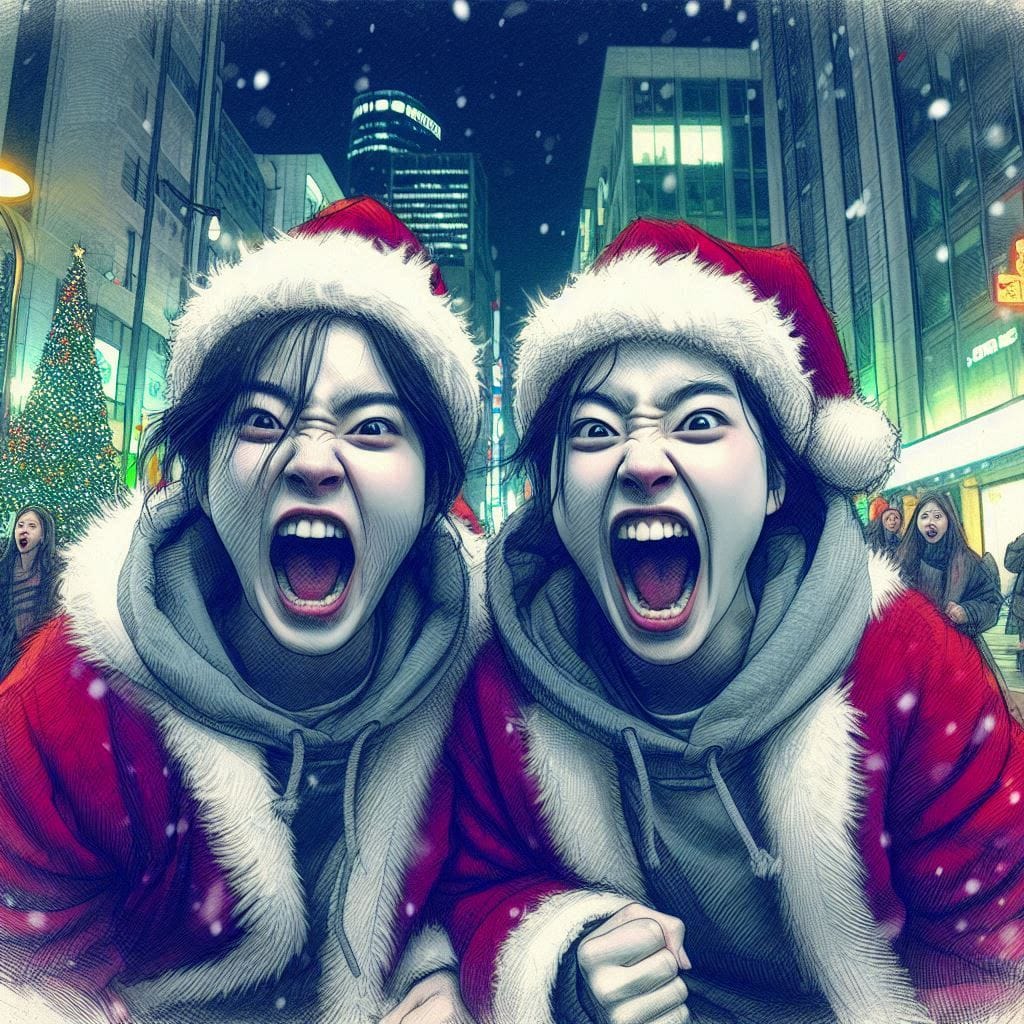We are free all night long!!!
The History of Christmas in Korea

As the weather suddenly turned chilly yesterday, I realized that 2025 is just around the corner. While I worry about the coming winter, the thought of Christmas in December brings back joyful memories from my childhood, making me forget about the cold for a moment.😅
When foreign visitors come to Korea and walk through the streets, they often see numerous church steeples and might wonder if Korea is a Christian nation, considering there seem to be as many churches in Seoul as Starbucks.🤣 However, that’s not the case. Over 60% of the population identifies as non-religious (and I am one of them). Korea is known for its freedom of religion and a lack of bias toward any specific religion.👍👍
Christmas was first introduced to Korea by Western missionaries in 1884, and it began to spread the following years. Indeed, missionaries had secretly conducted missionary work in Korea long before that. Still, the Korean people at the time did not fully understand the meaning of Christmas. Historical records indicate that the royal court of Joseon was quite curious about the Christmas tree introduced by the missionaries in the late 19th century.
After Korea became a Japanese colony in 1910, Christmas transformed from a religious observance into a widely commercialized event during the early 20th century. By the 1930s, the vibrant lights of Seoul created a festive atmosphere known as a “city of lights," with modern girls and boys enjoying the streets, and the custom of decorating for Christmas and exchanging gifts became increasingly popular. In addition to exchanging gifts, the culture of gathering with friends for festive activities on Christmas Eve flourished. In 1936, a newspaper article noted a lively atmosphere where company employees gathered to drink and celebrate. Unfortunately, this festive spirit was interrupted in 1937 by the onset of the Sino-Japanese War, which led the Japanese authorities to ban Christmas celebrations. One newspaper in 1938 even declared, “Santa Claus will not come,” reporting on the ban on Christmas events and the sending of Christmas gifts to Japanese soldiers.


People Gathering in Myeongdong on Christmas Eve
After liberation from Japan in 1945, the first President of Korea designated Christmas as a public holiday in 1949. From the mid to late 1950s, the perception grew that Christmas Eve was a day for young people to enjoy. During the curfew that lasted from 1945 to 1981 (which prohibited going outside from midnight to 4 a.m.), Christmas and New Year’s Eve were exceptions, allowing people to celebrate freely at night, which led to the tradition of staying out all night on these special occasions. Unlike many countries where Christmas is a family-oriented holiday spent quietly at home, Korea developed a custom of hitting the streets all night on this festive night. The place everyone flocked to was Myeongdong. On Christmas Eve, the streets of Myeongdong would be so crowded that humorous situations would occur, like parents losing sight of their children amid the excitement.

I also vividly remember waiting for Santa Claus during my childhood, hanging big stockings, and wondering if my stockings would be too small for the gifts. To avoid this, I would leave a note next to the stocking that read, “Dear Santa, I’ve been doing very good things lately, so if the present doesn’t fit in my stocking, please leave it next to him!”😅 In the 70s and 80s, the favorite Christmas gift among Korean children was a “mixed candy and snack gift set,” a large box filled with various sweets, sometimes presented in plastic containers shaped like Santa's red boot. Receiving one of these and showing it off to friends would make a child smile all day.



On the far left is "Sim Hyung-rae's" comedic carol song released in 1984, which is the best-selling comic carol in Korea. Next to it is the movie "Home Alone," which has been aired on TV every Christmas for 27 years, followed by the OST from the popular film "Love Actually."
During the Christmas season, carols that celebrate the holiday can be heard everywhere. Especially the Christmas carols produced by the most popular comedians of the time echoed throughout Myeongdong for the entire month of December. However, starting in the 2010s, the carols disappeared due to stricter copyright issues. Fortunately, the government agreed with Korean copyright organizations in December 2015 to eliminate the copyright fees on Christmas carols, allowing them to be played again in the streets.

From the 1960s to the 80s, purchasing Christmas seals became almost a moral obligation. The Christmas seal showed participation in helping tuberculosis patients, affixed alongside postage on Christmas cards. Initially created in Denmark in 1904, seals spread quickly due to the high rates of tuberculosis at that time. In Korea, they were introduced in December 1932 by Sherwood Hall, a Canadian missionary and doctor, and the first seals depicted Namdaemun, our national treasure Number 1. During the 70s and 80s, with no Internet, it was common to create and send handmade Christmas and New Year cards with seals attached to friends and loved ones. It was a sweet gesture, especially when decorating a card for a crush with a romantic note like "From a boy... to a girl."❤️😅

In the past, Myeongdong would become so crowded that people would drink and party all night, prompting the government to initiate campaigns for a "quiet year-end celebration" where officials would march in the streets holding signs. However, as society has evolved, it seems that Korea has become calmer. Due to globalization, we have gradually adopted a culture of spending Christmas with family, much like in many other parts of the world.

As we approach the holiday season, I look forward to hearing the familiar sounds of the Salvation Army bells ringing in Myeongdong again. It reminds us to help our less fortunate neighbors navigate these challenging economic times together. Those warm and nostalgic memories from the past are dearly missed.😥🙏✔️




Comments ()